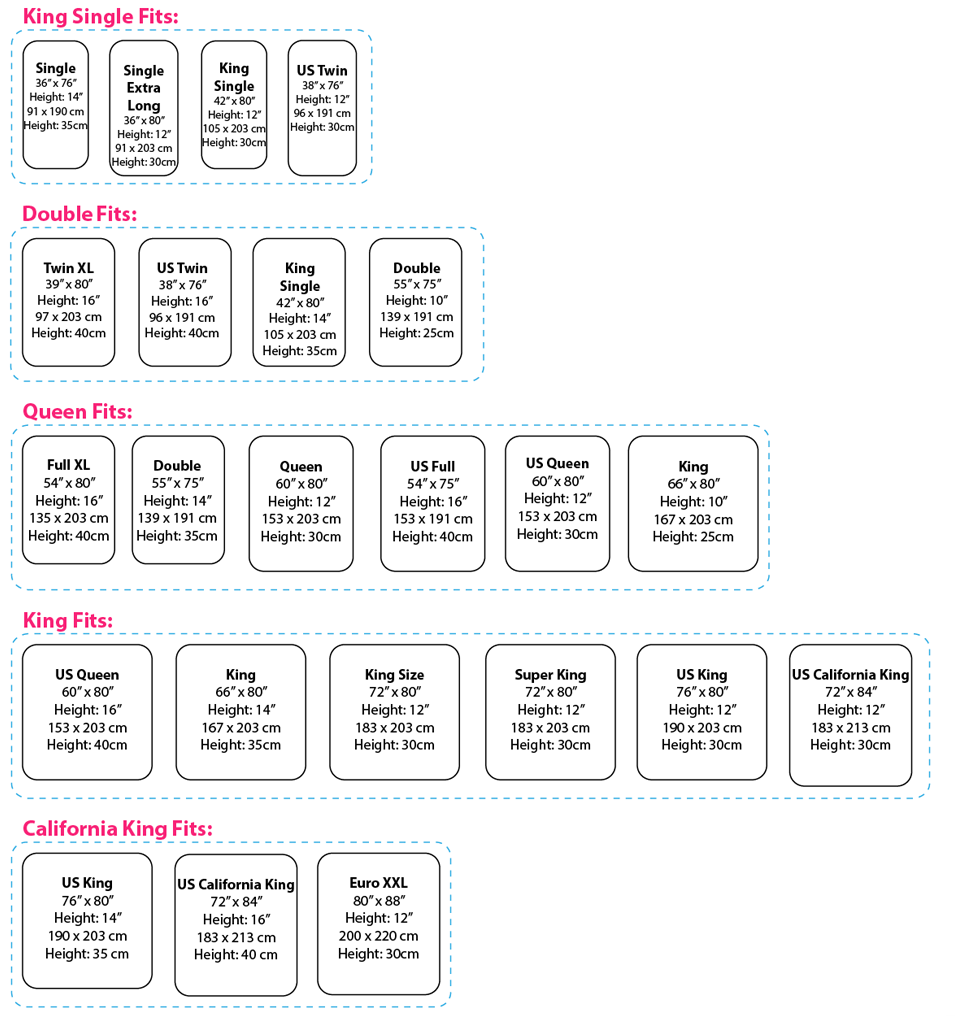Which Bed or Mattress size is right for me?
Tired of tossing, turning or waking up snoring? Is it time to change your mattress? The right mattress really can change everything.
At helmii, we handcraft every mattress to deliver the comfort and support your body needs in the firmness you prefer, and the size that fits your space.
On the rest of this page, discover how to:
- Select the correct mattress size, and
- Choose the right comfort level

Have an inquiry?
Get in touch with our sleep expert via email, call or Whatsapp
Choose Your Mattress Size
Single Size Mattress: 90 x 200cm

This is the smallest of the adult size mattresses. It’s compact sizing means it’s ideal for children or those living in small spaces such as a studio or apartment. A single mattress would be suitable for a child and can come in two length sizes 90 x 190cm or 90 x200cm. The 90x190cm size is commonly used for beds, daybeds and bunk beds. For a single adult, or those with small bedrooms or guest rooms we would probably recommend a slightly larger mattress size of 90 x200cm.
One question we get asked is can I use two single mattresses on a King bed? Well, yes you can. Two single mattresses 90 x 200 make up the dimensions of one King size mattress. This is popular when a couple have different comfort preferences eg soft and firm or medium and firm. This option is also popular when people purchase an adjustable frame. Just be mindful that the mattresses should be foam so that they can adjust with the bed frame. Choosing separate mattresses allows couple to sit up or lie back without disrupting each other. When using two single mattress’ on a King bed frame you can either use separate Single Bed sets or a single King size bed set.
See our full range of luxury mattresses Dubai.
Small Double Mattress: 120 x 200cm

Slightly bigger than a single this is a great option for older children or young adults. It is very popular with teens but is also suitable for people with limited space but who want a larger bed.
Queen Size Mattress: 150 x 200cm

This size is known as a standard double. The Queen size mattress is a comfortable fit for a couple who both like to stretch out in bed or those who share their bed with pets. Also great if you sleep alone but you like a little extra room to move around. The Queen size bed and mattress is ideal for smaller rooms or as a guest bed and mattress. We recommend this size to be used in a room that is at least 2.5m x 3m
Have an inquiry?
Get in touch with our sleep expert via email, call or Whatsapp
King Size Mattress: 180 x 200cm

The king size mattress is by far the most popular size, it’s large enough and significantly still comfortable enough for couples who suffer with children who like to sneak into bed during the night or even pesky pets. Great for climbing in and relaxing to watch your favourite Netflix series after a hard day at work. Get in, lie back and relax with plenty of room.
If you opt for a King a larger bed room is a must, preferably at least 3m x 3.5m and king size mattress size in cm is 180 x 200 cm.
One question we get asked is can I use two single mattresses on a King bed? Well, yes you can. Two single mattresses 90 x 200 make up the dimensions of one King size mattress. This is popular when a couple have different comfort preferences eg soft and firm or medium and firm. This option is also popular when people purchase an adjustable frame. Just be mindful that the mattresses should be foam so that they can adjust with the bed frame. Choosing separate mattresses allows couple to sit up or lie back without disrupting their partner. When using two single mattress on a King bed frame you can either use separate single bed sets or a single King size sheet bed set

Emperor Size Mattress: 200 x 200cm

The ultimate in mattress sizing. An Emperor size mattress is large enough for the whole family to get in. Think lazy weekends with the kids jumping in and even the cat and dog. The Emperor size mattress really is a family sized bed, but beware you’ll need a large bedroom around 4m x 3.5m.
Mattress Comfort Levels
Whether you sleep on your back, side or stomach, we’ve got you.
Choose from soft, medium or firm options, and explore different styles like memory foam, pocket spring and hybrid mattresses, all designed to help you sleep more deeply and wake up feeling better.
Not sure what to choose? This guide to choosing a mattress explains which type suits different sleep styles and body types, so you can pick with confidence.
Mattress Composition & Spine Alignment
Bonnel or open coil spring mattresses are affordable and versatile and come with metal springs that run down the width of the mattress for comfort.
Pocket sprung mattresses are similar but come with fabric-encased individual springs for enhanced comfort and no ‘roll together’.
The most important factor to consider when sleeping is spine alignment.
You want to achieve a neutral spine exactly the same as when you sit or stand correctly - therefore choosing the correct tension for the right support is crucial.
Mattresses for Front Sleepers
You’ll usually need a mattress with more support so there are fewer gaps between your body and the mattress.
The aim is to maintain a neutral position in your spine and neck - consider going without a pillow if necessary.
Mattresses for Side Sleepers
You’ll need a softer spring to allow your shoulders and hips to sink into the mattress, keeping the spine straight without causing pressure points on the joints.
Side sleepers often benefit from softer mattresses that reduce pressure on the shoulders and hips, while front sleepers typically need a firmer surface to avoid arching the lower back.
Mattresses for Back Sleepers
Check that the tension of the mattress allows the bed to cushion right into your lower back so there’s no gap.
Try sliding a hand underneath the base of your spine; if it’s easy to do, the mattress may be too firm; if there is no room, the mattress may be too soft and not giving you the right support.
There is a vast selection of bed and mattress sizes out there, so we’ve broken down the most popular to try and help you.
What's right for you will depend on how much room you need your mattress to provide, how you prefer to sleep, and your perfect spine alignment.
If you'd like to discuss your options in more detail, Call or WhatsApp our sleep specialists on +971529554469 and we’ll guide you personally.
Ready to shop for your perfect mattress?
Use the button below to explore our full range:
helmii MatressesHave an inquiry?
Get in touch with our sleep expert via email, call or Whatsapp




 customerservices@helmii.com
customerservices@helmii.com

 +971 529 55 44 69
+971 529 55 44 69